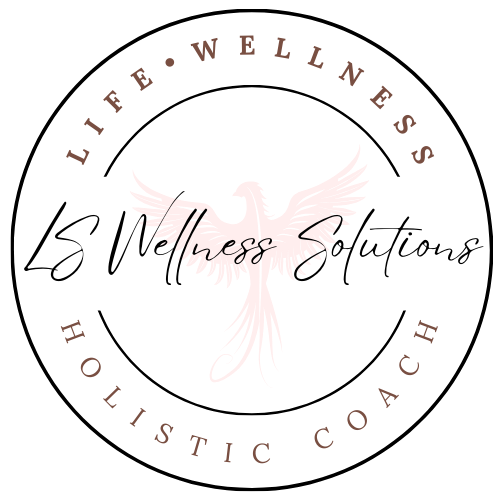
Chronic stress induced by toxic relationships—be it familial, intimate, professional, or among friends—can severely impact one’s overall well-being. The Integrative Fusion Method (IFM) offers a holistic approach to healing by combining various therapeutic modalities. These include sound therapy, somatic therapy (which encompasses breathwork, meditation, and movement), mindfulness, nutrition, aromatherapy, energy balancing, coaching, education, and Emotional Freedom Techniques (EFT). By addressing multiple dimensions of wellness, the IFM provides a comprehensive solution for those recovering from the damaging effects of toxic relationships.
Understanding Chronic Stress in Toxic Relationships
Toxic relationships are characterized by behaviors that are emotionally and psychologically damaging. Chronic exposure to such stress can lead to various health issues, including anxiety, depression, sleep disturbances, and weakened immune function. Recovery from this stress is complex and multifaceted, requiring interventions that address both the mind and body.
The Integrative Fusion Method: Modalities and Their Synergy
The IFM combines multiple therapeutic practices, each targeting different aspects of wellness. Here’s a detailed look at each modality and how they synergize to promote holistic healing:
1. Sound Therapy
Sound therapy uses vibrational frequencies to promote relaxation and reduce stress. Techniques such as binaural beats, sound baths, and music therapy can help recalibrate the nervous system, reducing the physiological impacts of chronic stress.
2. Somatic Therapy
Breathwork: Controlled breathing exercises help regulate the autonomic nervous system, promoting relaxation and reducing anxiety.
Meditation: Regular meditation practice can enhance emotional regulation, increase mindfulness, and improve overall mental health.
Movement: Practices like yoga and dance therapy help release stored tension in the body, improve physical health, and foster a sense of empowerment.
3. Mindfulness
Mindfulness practices involve staying present and fully engaging with the current moment. This can help you break free from negative thought patterns and foster a greater sense of peace and acceptance.
4. Nutrition
Proper nutrition is essential for physical and mental well-being. A diet rich in nutrients can support brain health, reduce inflammation, and boost overall energy levels. Specifically, Ayurvedic nutrition supports eating for your dosha/body type.
5. Aromatherapy
Aromatherapy uses essential oils to promote relaxation and reduce stress. Scents like lavender, chamomile, and frankincense can have calming effects on the mind and body.
6. Energy Balancing
Energy healing practices, such as Reiki and acupuncture, aim to balance the body’s energy flow, which can be disrupted by chronic stress. These practices can help restore a sense of harmony and well-being.
7. Coaching and Education
Personal coaching provides support and guidance, helping individuals set goals and develop strategies for overcoming stress. Education about stress management techniques and the impacts of toxic relationships empowers individuals to take control of their healing journey.
8. Emotional Freedom Techniques (EFT)
EFT involves tapping on specific acupuncture points while focusing on negative emotions. This can help release emotional blockages and reduce stress.
Synergistic Effects of the Modalities
When these modalities are used in combination, their effects are synergistic, meaning they work together to enhance overall wellness. For example:
– Mindfulness and Meditation: These practices can improve the effectiveness of sound therapy by making individuals more receptive to its calming effects.
– Breathwork and Movement: Combining these somatic practices can amplify their ability to release tension and promote relaxation.
– Nutrition and Energy Balancing: A healthy diet can support the body’s energy flow, enhancing the effects of energy balancing practices like Reiki.
Wellness and Healing: A Non-Linear Journey
Healing from the damage caused by chronic stress in toxic relationships is not a linear process. It involves multiple dimensions of wellness, including physical, emotional, mental, and spiritual health. The Integrative Fusion Method supports these different dimensions from various angles, providing a comprehensive approach to healing.
Physical Wellness
Practices like movement, nutrition, and energy balancing directly address physical health, promoting better sleep, increased energy, and overall physical well-being.
Emotional and Mental Wellness
Sound therapy, mindfulness, meditation, and EFT help regulate emotions, reduce anxiety, and improve mental clarity. Coaching and education provide the tools and knowledge needed to navigate emotional challenges and develop resilience.
Spiritual Wellness
Energy balancing, aromatherapy, and mindfulness practices can foster a deeper sense of connection and inner peace, contributing to overall spiritual well-being.
Conclusion
The Integrative Fusion Method offers a comprehensive solution for restoring wellness from the chronic stress associated with toxic relationships. By combining various therapeutic modalities, the IFM addresses the multiple dimensions of wellness, providing a holistic approach to healing. This method not only alleviates the symptoms of chronic stress but also empowers individuals to reclaim their well-being and lead healthier, more balanced live






